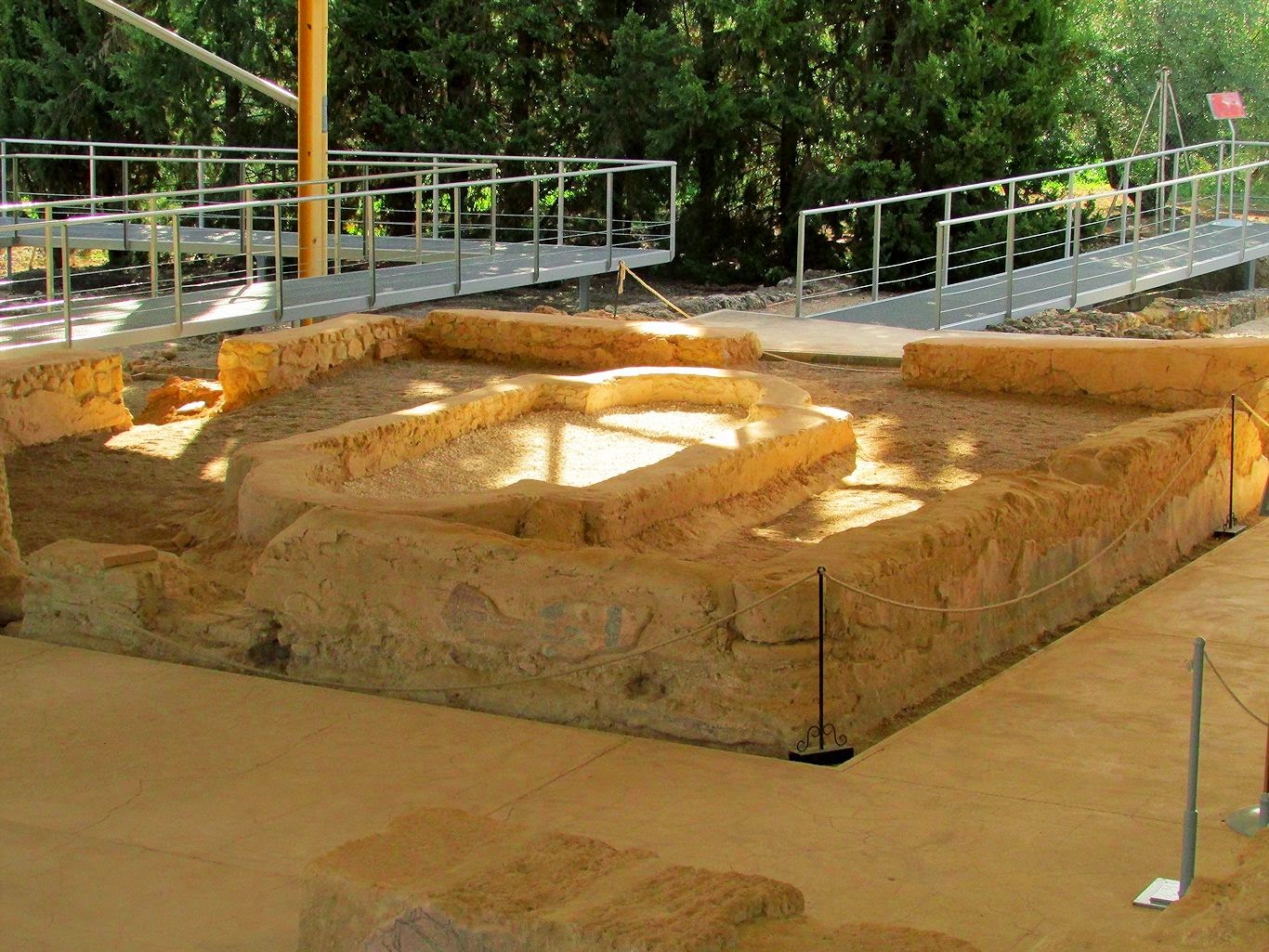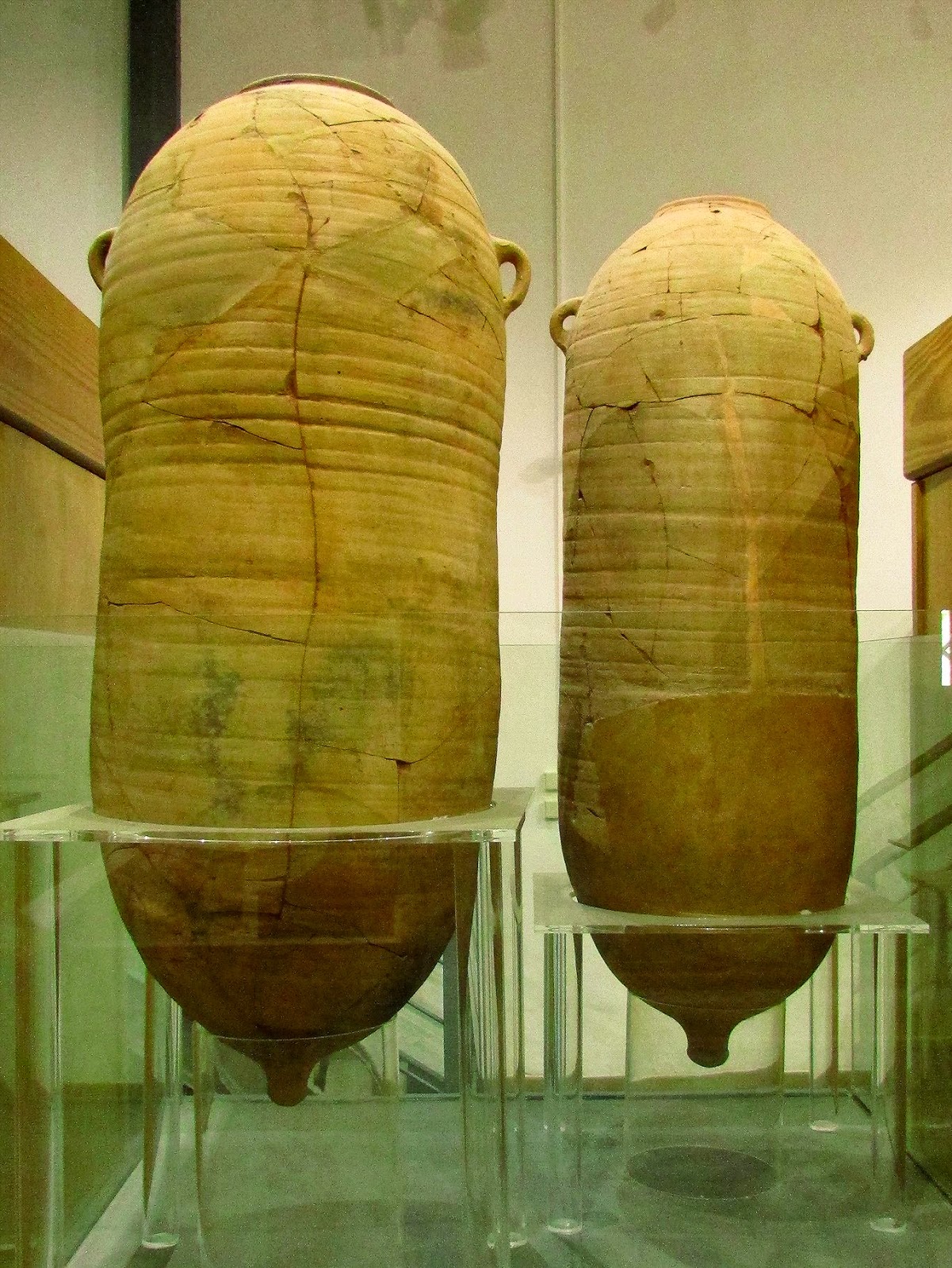Today we drove to the small village of Almendinilla to see the excavated ruins of Villa Romana de el Ruedo. This was a lavish villa for rural Spain, the villa was similar to the Hellenized domus in Roman cities, complete with atrium, impluvium, triclinium, cubicula, a bath and Roman wall paintings. The excavation also found some terrific sculpture, this would have been the villa of a wealthy aristocrat.
The Spanish do a fine job of caring for their historical ruins, there is a cover and walkways to protect the site and signage is very good. Some nice mosaics are also on display in some of the rooms.
There was also an Iberian settlement, known as Cerro de la Cruz. Excavations revealed an ash layer, which indicates that there was a substantial fire that destroyed the village. As no rebuilding took place, it is theorized that the fire was the result of a particularly violent Roman attack.
Quite a few interesting items were unearthed, including weapons and burial urns from the site of the necropolis. The small museum contains items from both the Iberian and Roman period as well as a display dedicated to olive oil production.
After visiting the museum, which has the most extraordinary entrance, complete with stone path lined with trees, we drove to Priego de Cordoba, which was on the way home. We wanted to stop by Preigo de Cordoba again to have a walk through the town.
After having a café con leche in the plaza, we wandered into the oldest area of the town, known as the Barrio de la Villa. This is a great area of tiny winding streets full of pots of geraniums and small plazas. There are also larger parks and plazas with statuary, flowers and trees, Preigo de Cordoba is a lovely town.
In one of the garden areas, a group of people were hammering away on drums and then marched off down the street. We sat on a bench and had our lunch with the drumming tune ringing in our ears.
The town gained a lot of wealth in the 18th century due to textile manufacturing and continues to look like a prosperous town today, although the main industry is olive oil production, which they seem to promote heavily.
We have never seen such smartly dressed little kids than in this town, quite a few shop fronts reveal an unbelievable range of infant and child clothing, fancy prams and paraphernalia. The kids are done up in totally coordinated outfits, both ninos and ninas (boys and girls).
After we left Preigo de Cordoba we took a new route home right through the Subbetica and passed other nice looking white villages, always with an old Moorish castle or Alcazaba on top of the hill.
Mosaic in one of the rooms
Triclinium (dining room)
Atrium with impluvium (pool), it would have been surrounded by columns
Entrance path to the museum
Amphora from the Iberian village
Manuel olive press
Painted amphora with lid
Iberian sword
Olive roller mill
Gorgeous tiled entrance to a home in Priego de Cordoba
Potted geraniums in the old Barrio de la Villa in Priego de Cordoba
Carcabuey Castle












No comments:
Post a Comment